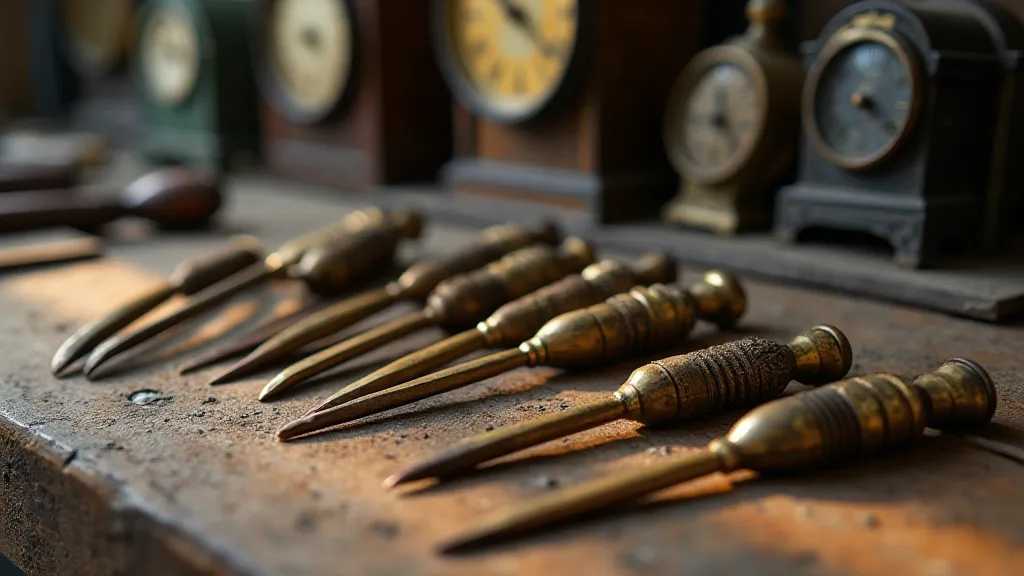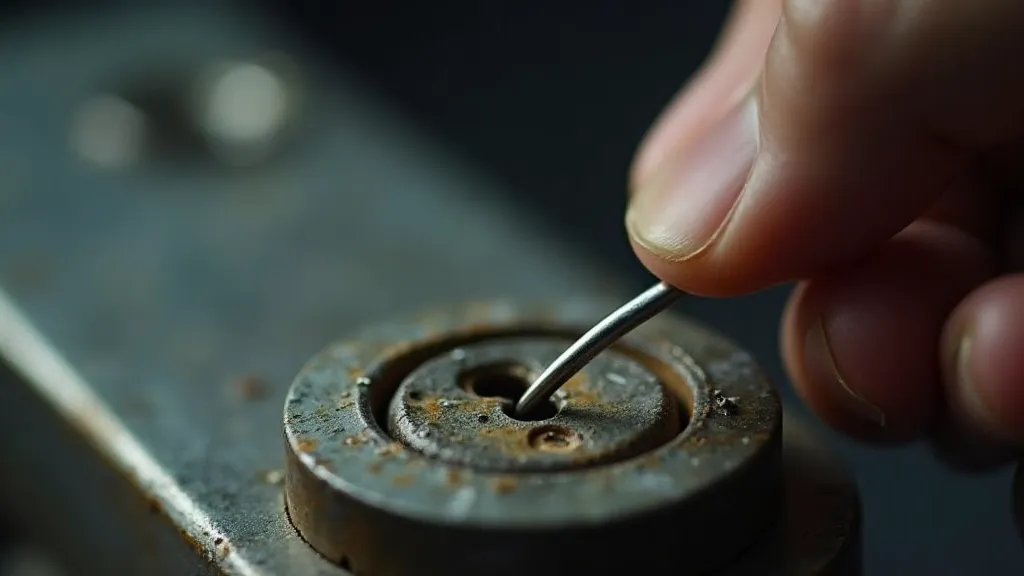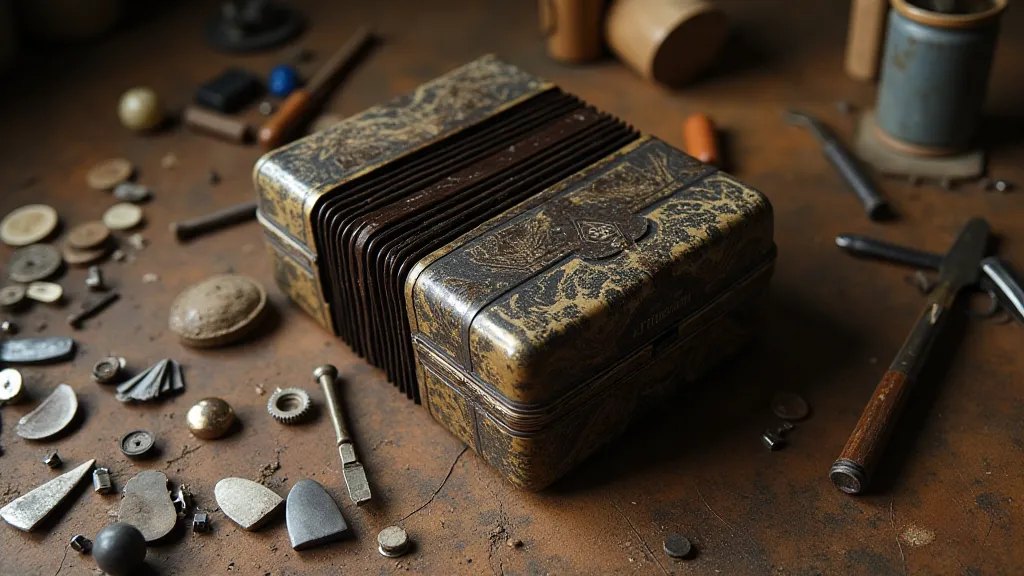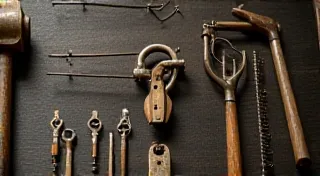Echoes in the Tumblers: The Poetry of Precision
There's a quiet intimacy in holding an antique accordion. The bellows, worn smooth by countless breaths, the keys bearing the faint patina of countless melodies—they whisper stories of bustling ballrooms, intimate gatherings, and perhaps, solitary practice rooms. It’s a physicality, a connection to a past filled with music and human expression. And in a strange, unexpected way, that same sense of connection—that same appreciation for intricate mechanism and subtle interaction—resonates deeply within the world of lock picking.
Most people associate lock picking with criminals or clandestine operations, a narrative fueled by fiction and misunderstanding. But for those who approach it with respect and a genuine curiosity, it reveals itself to be something entirely different: a delicate dance of understanding, a meditative exercise in precision, and, yes, even a form of kinetic poetry.

Beyond Brute Force: Understanding the Mechanism
The common misconception is that lock picking is about force. It isn't. It’s about understanding. Just as an accordion player understands the intricate relationship between the reeds, the bellows, and the keys to produce a beautiful sound, a lock picker understands the interaction of the pins, the springs, and the cylinder within a lock. Each component has a specific role, and manipulating them with finesse requires observation, patience, and a growing intuition.
The humble pin tumbler lock, the most common type you’re likely to encounter, isn’t actually that old. Its design started to gain prominence in the late 18th century, becoming widely adopted in the 19th. Before that, levers, warded locks, and even elaborate combinations were the norm, each offering its own complexities. The pin tumbler’s appeal lay in its relative simplicity to manufacture, while still offering a layer of perceived security.
But even simplicity, when disassembled and examined, reveals a remarkable level of engineering. Each pin within the lock cylinder has a designated height, controlled by a spring. The goal of the lock picker isn’t to destroy these pins, but to momentarily elevate them to a precise height, allowing the cylinder to rotate and the lock to open. It's about feeling for the subtle 'click' as each pin sets, a silent acknowledgment of a perfectly executed maneuver.
The Tools of the Trade: More Than Just Metal
The tools themselves – the picks and the tension wrenches – are surprisingly simple. A pick is essentially a thin piece of metal shaped to interact with the pins. Tension wrenches apply rotational force to the cylinder, creating the necessary friction to allow the pins to set. Yet, within this simplicity lies a vast spectrum of quality and design. A poorly made pick can be as frustrating as it is ineffective; a tension wrench that doesn’t provide the right level of feedback can render the process near impossible.
Just as an accordionist would choose reeds carefully, considering their tone and responsiveness, a lock picker might develop a preference for certain picks based on their feel and ability to interact with different lock mechanisms. These tools aren’t just instruments; they become extensions of the picker’s hand, allowing them to translate their understanding into tangible action.
A Meditation in Motion: The Rhythm of Precision
The act of lock picking is, in its own way, a form of meditation. It demands absolute focus. Distractions fade away as you concentrate on the subtle movements of your hands, the gentle feedback from the tools, the quiet anticipation of success. It's a process of problem-solving, of adapting to the unique characteristics of each lock. No two locks are exactly alike; each presents its own set of challenges and subtle variations.
Think of the accordion player’s hands, moving with a fluid grace, anticipating the next chord, the next breath. The lock picker’s hands require a similar level of dexterity and responsiveness. It's not about brute force, but about finesse, about understanding the nuances of the mechanism.

The Ethical Considerations: Respect for Security
It's vital to acknowledge the ethical dimension. Lock picking is a skill that demands respect for security and a commitment to responsible use. It is absolutely not intended for illegal activities. The purpose of learning this skill should be for educational purposes – to understand how locks work, to appreciate the intricacies of mechanical engineering, and to potentially assist in situations where authorized access is required, such as locksmithing or vintage mechanism restoration.
Many vintage accordions have suffered from years of neglect and improper maintenance, rendering them effectively locked. A skilled artisan might use their knowledge of mechanics, including an understanding of simple locking mechanisms, to carefully disassemble and restore these instruments. This principle of careful, knowledgeable intervention applies to all mechanical systems.
More Than Just a Skill: A Connection to the Past
Ultimately, the art of lock picking transcends the mere manipulation of metal. It’s a connection to the past, a glimpse into the minds of the engineers and craftsmen who designed and built these intricate mechanisms. Just as the accordion player feels a profound connection to the musicians who came before them, the lock picker feels a sense of respect and appreciation for the ingenuity and precision that went into creating these locks.
The quiet click of a tumbler setting, the smooth rotation of a cylinder – these aren’t just sounds of success; they’re echoes in the tumblers, whispers of the past, and a testament to the enduring power of human ingenuity.






